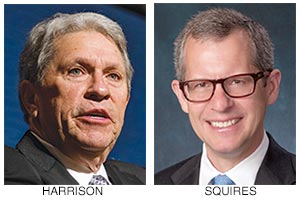Canadian Pacific Signals Proxy Fight

The stage is set for a proxy battle between Canadian Pacific Railway Ltd. and Norfolk Southern Corp. after the Canadian company’s $28 billion acquisition bid was again rejected last week by the U.S. company, according to Canadian Pacific’s own signals and analysts’ comments.
Canadian Pacific executives, declaring that their proven profit-boosting management style could produce $1.8 billion in annual shareholder benefits at Norfolk Southern, identified a proxy fight as a next step if Norfolk Southern’s position is unchanged.
Norfolk, Virginia-based Norfolk Southern argued that its own plan to improve profitability would deliver more shareholder value than Canadian Pacific’s “grossly undervalued” proposal without significant regulatory risk at the Surface Transportation Board.
Calgary, Alberta-based Canadian Pacific aims to create a $17.6 billion company, with trucking-related revenue larger than all but seven companies on the Transport Topics Top 100 list of the largest for-hire carriers in the United States and Canada.
Its second offer, on Dec. 8, was $32.86 per share and 0.451 shares of its stock for one of Norfolk Southern’s, boosting Norfolk Southern holders’ stake to 47% — up from 41% in its initial offer Nov. 17.
Hunter Harrison, Canadian Pacific’s CEO, said on a Dec. 8 conference call that management will “do everything at its disposal to get this to the shareholder and get a resolution to it, and if that calls for a proxy, so be it.”
Others were more blunt.
“Both sides are dug in, and we believe a proxy battle is likely,” said Robert Salmon, a Deutsche Bank analyst.
Cowen & Co. analyst Jason Seidl predicted a proxy fight, citing the success of activist investor William Ackman, who successfully ousted Canadian Pacific’s management in 2012 and installed Harrison to lead a turnaround. Since 2012, Canadian Pacific’s operating ratio has improved nearly 23 percentage points to below 60. Meanwhile, Norfolk Southern has remained above 70.
Canadian Pacific aims to put itself into a voting trust and install Harrison as CEO at Norfolk Southern to improve performance there,
citing Harrison’s success in doing that at Canadian National Railway and Illinois Central Railroad as well as Canadian Pacific. The carrier believes a voting trust would reduce shareholder risk by giving Norfolk Southern shareholders their money in May, instead of waiting two years while STB reviewed whether to approve a combination.
Norfolk Southern responded, in comments by CEO James Squires and a “white paper” from two former STB commissioners that Canadian Pacific’s approach was illegal, untried and unworkable.
Ex-Commissioners Charles Nottingham and Francis Mulvey said the Canadian Pacific plan would be the first test of the agency’s approval standard for voting trusts since they were toughened in 2001 to force applicants to show their deal was in the public interest. They added that the approach amounted to implementation of its business plan “during the STB’s merger-review process and prior to formal STB approval of the merger. This would directly violate the express statutory bar against a premature exercise of common control. No matter how CP executives are put in charge of NS management before the merger is approved, the STB likely would not be fooled into thinking that CP and NS are operating independently.”
Canadian Pacific argued that its two-step approach to do a voting trust before the STB review process is done has been approved in the past. It said the public interest standard would be met by offering new service options for shippers that would improve competition.
Stifel Nicolaus analyst John Larkin wondered what is blocking Canadian Pacific, where Ackman is a director, from starting a proxy fight right away to seek control of Norfolk Southern and installing Harrison there.
“Since most of the synergies relate to the Hunterization of the NSC, wouldn’t that be a scenario more likely to be embraced by most parties?” Larkin’s report said of Harrison, adding it was “unlikely” a conventional merger could succeed.
Canadian Pacific envisioned $550 million in workforce productivity, $710 million in improved train operating efficiency and the balance from cutting support costs and raising revenue, with 72% of the $1.8 billion achieved before a merger is completed.
Since Harrison arrived, the workforce has been cut by about one-third. The railroad last year generated about 50% more profit before interest and taxes per worker than Norfolk Southern.
Squires also sketched a 65 operating ratio target for the railroad by 2020, and a ratio below 70 next year. The path to improvement he outlined included more intermodal and auto business, an end to the drop-off in coal and crude oil freight and administrative steps such as consolidating offices.
There are other unknowns.
Shareholders and shippers still haven’t weighed in, though Seidl said his shipper survey found 59% against the deal. Also, Canadian Pacific officials haven’t said whether they will raise the offer. But analysts believe the door is open for a “modest” increase.



